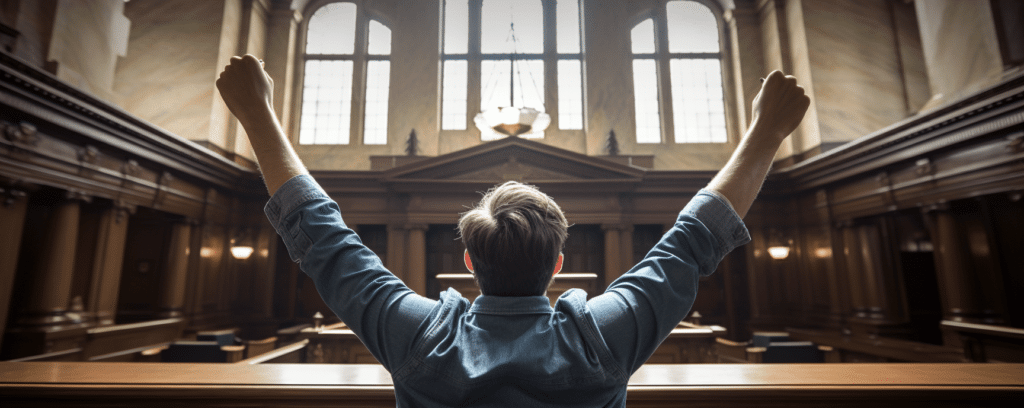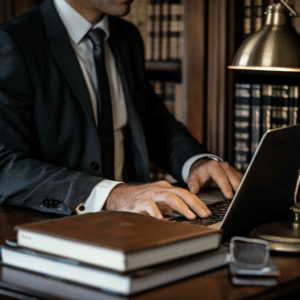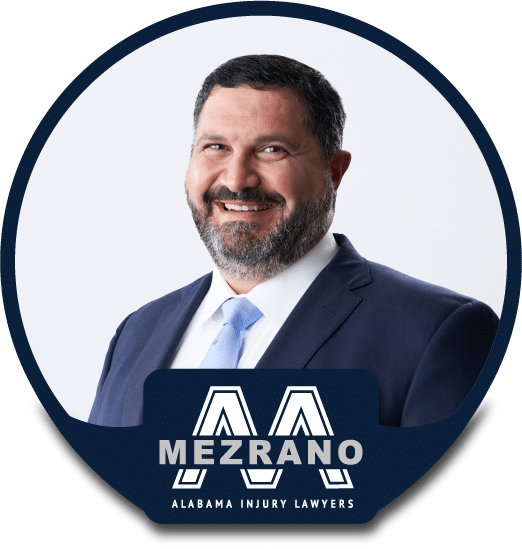Winning Your Pedestrian Accident Lawsuit: Step-by-Step to Maximum Compensation
Last updated Thursday, April 11th, 2024

Dealing with a pedestrian accident and the subsequent lawsuit can be challenging. If you’re seeking compensation, questions about the legal process, your rights, and how to build your case may be at the forefront of your mind. This guide directly addresses these concerns, outlining the critical steps for a pedestrian accident lawsuit and what you need to know to position yourself for a favorable outcome. While recovering from physical and emotional trauma, gain clarity on how to navigate legal hurdles and secure the compensation you rightfully deserve.
Key Takeaways
- Pedestrian accident lawsuits require demonstrating the driver’s negligence and properly quantifying injuries for fair compensation, which is complicated due to the severity of injuries pedestrians typically suffer.
- A meticulous collection and presentation of evidence, such as accident reports, eyewitness testimonies, and medical records, are vital for proving driver fault and establishing the pedestrian’s claim for damages.
- Calculating damages, including both economic and non-economic losses, and navigating the insurance claims process with strategic legal assistance are essential steps toward recovering the full compensation owed to the pedestrian victim.
Get Your FREE Case Review Today
Contact us today and we will help you get the compensation that you deserve.
or Send Us Your Case DetailsGet Your FREE Case Review Today
Contact us today and we will help you get the compensation that you deserve.
or Send Us Your Case DetailsUnderstanding Pedestrian Accident Lawsuits
Venturing into the world of pedestrian accident lawsuits is to step into a realm where proving driver liability and quantifying the full extent of one’s injuries are paramount. These cases, a significant category within personal injury cases, are marked by the vulnerability of pedestrians who, without the protective enclosure of a vehicle, often sustain severe injuries. The pursuit of justice hinges on demonstrating a driver’s negligence, whether it’s their failure to yield at a bustling crosswalk or the momentary distraction that led their vehicle astray. It’s about ensuring that the harrowing ordeal one faces does not go uncompensated, that the wrongs are righted and the path to recovery, both physical and financial, is cleared.
When a peaceful stroll turns into a fight for recovery and recompense, the legal issues at hand become the compass guiding accident victims. The common causes of these traumatic events, such as the all-too-frequent distracted driving, failure to yield, or a hit and run accident, lay the foundation for a lawsuit. The legal journey involves:
- Assembling a mosaic of evidence
- Piecing together the negligence that led to the collision
- Ultimately, securing fair compensation for the damages sustained
It’s a battle not just against the aftermath of the accident but also against the complex legal system that stands between victims and the justice they seek.
Common Causes of Pedestrian Accidents

The risks are not borne equally; certain vehicles and behaviors tip the scales towards calamity. Some of these risks include:
- SUVs, with their imposing size, are more likely to cause severe harm upon impact
- Alcohol, involved in half of the fatal pedestrian accidents, blurs the line between safety and peril for both drivers and pedestrians alike
- Among those who walk among us, the elderly and certain ethnic populations tread a more dangerous path, as statistics sadly reveal their higher susceptibility to fatal accidents
It paints a picture of a multifaceted issue, where every step on the pavement could be a step towards a legal battle that demands justice for the injuries sustained.
Legal Issues in Pedestrian Accident Cases
The tapestry of a pedestrian accident lawsuit is woven with legal threads that must demonstrate the defendant’s breach of duty—a duty of care that should have shielded the pedestrian from harm. The law demands that a driver’s liability be established beyond mere circumstance, showing a clear violation of traffic laws or local regulations that safeguard pedestrian well-being. Yet, the legal landscape offers more than just recompense for the physical and emotional toll; it extends to punitive damages in cases where gross negligence or intentional harm is proven, serving as a stern rebuke to reckless disregard for human life.
Navigating these legal intricacies is akin to charting a course through stormy seas. The compensation sought in pedestrian lawsuits is twofold, encompassing both economic and non-economic damages that attempt to mend the financial and emotional fractures caused by the accident. It’s about putting a price on the priceless and a value on the intangible. The litigation process, with its police reports and parking lot confrontations, becomes the arena where victims fight for their legal right to be made whole after being unjustly struck down.
It’s a complex journey, but one where the compass of the law points toward justice for the pedestrian hit.
Proving Fault in a Pedestrian Accident Lawsuit
To win a pedestrian accident lawsuit is to construct an unassailable case proving that the driver’s negligence shattered the safety that every pedestrian is entitled to. Establishing fault is the cornerstone of any personal injury claim, and for the pedestrian hit, it is the evidence that speaks volumes—telling the story of a momentary lapse that led to enduring consequences. Visual evidence, like the haunting stillness of photographs or the jarring motion of video footage, captures the scene with an eloquence that words alone cannot convey, aiding in the reconstruction of the events that unfolded. It is this evidence that forms the bedrock upon which the case is built, each piece a brick in the fortress of accountability.
The task at hand is not simply to point fingers but to illuminate the truth through a legal lens. The evidence must not only depict the accident but also highlight the driver’s failures, whether it was a missed stop sign or a glance away from the road that led to damages sustained. It’s an intricate dance of fact and law, where the rhythm is set by the meticulous gathering of evidence and the precise application of legal standards.
Gathering Evidence
In the aftermath of a pedestrian accident, the quest for justice begins with accumulating a trove of evidence, including:
- Official accident reports that lay out the factual landscape
- Eyewitness testimonies that offer unbiased glimpses into the event
- Surveillance footage that silently witnesses the truth
- Medical records chronicling the injuries sustained
- Truck black boxes capturing the moments before impact
These pieces of evidence play a pivotal role in painting the complete picture of the accident.
The immediacy of action cannot be overstated; evidence is a perishable commodity. Initiating the evidence collection process, from filing an insurance claim to securing witness statements, is a race against the clock, with every passing moment threatening the integrity and availability of crucial information. It is here that the personal injury lawyer emerges as a guardian of truth, deftly weaving together the strands of evidence into a compelling narrative to prove driver fault, while also standing toe-to-toe with insurance companies in pursuit of a settlement that reflects the true cost of the accident.
Legal Standards for Proving Fault
In the court of law, proving fault in a pedestrian accident is an exercise in precision. The legal standards demand a trinity of proof: showing that the driver owed a duty of care, breached that duty with their actions or inactions, and thereby caused the victim’s injuries. It’s a meticulous process that requires connecting the dots between responsibility and harm, painting a picture that leaves no room for doubt.
However, the legal tapestry in states is intertwined with the doctrine of contributory negligence—a stringent rule that can completely bar compensation if the pedestrian is found to be even marginally at fault.
Yet, even within this stringent framework, exceptions carve out a path to justice. When the evidence demonstrates that the defendant had the last clear chance to prevent the accident or their actions were marked by a willful disregard for safety, the gates of compensation remain open. It underscores the importance of a strong legal strategy that not only proves fault but also navigates the nuances of contributory negligence, steering toward the rightful restitution for the pedestrian hit.
Calculating Damages in Pedestrian Accident Lawsuits
The journey towards financial recovery in a pedestrian accident lawsuit is mapped through the calculation of damages. It’s an assessment that captures the full spectrum of losses, from the tangible economic damages of lost earnings and out-of-pocket costs to the non-economic damages that attempt to quantify the intangible—loss of enjoyment of life and loss of spousal companionship. It’s a process that demands a keen eye and a deep understanding of both the immediate and the long-term impact of the accident on the victim’s life. Whether it’s the mounting medical bills or the silent suffering that echoes in the absence of laughter, each element must be carefully evaluated to ensure fair compensation for the injuries sustained.
The ledger of losses is not limited to the present but extends into the future, projecting the economic trajectory that has been altered by the accident. It’s a meticulous calculation that factors in every missed workday, every medical appointment, and every ounce of pain endured, painting a portrait of damages that’s as comprehensive as it is compassionate. The skilled car accident lawyer becomes the architect of this financial restoration, crafting a claim that reflects not just the cost of what was lost, but also the value of what could have been.
Economic Damages
Amidst the turmoil of a pedestrian accident, economic damages emerge as the quantifiable consequences—medical expenses that tally the cost of recovery, lost wages that echo the silent toll of missed work, and property damage that serves as a stark reminder of the collision. It’s a financial reckoning that tallies every expense, including:
- immediate medical bills
- future medical costs
- lost income
- potential future income loss
For the self-employed, the impact is measured in the language of financial documents—invoices and profit and loss statements that tell a story of interrupted entrepreneurship.
Supporting claims for economic damages requires a fortress of documentation—a bulwark of police reports, medical records, and detailed accounts of all treatments and their associated costs. And when the future is as uncertain as the present, forensic economists step in to project income loss and quantify the changes to one’s earning capacity, transforming abstract numbers into concrete figures that substantiate the claim for fair compensation.
Non-Economic Damages
The shadows cast by a pedestrian accident extend beyond the realm of economic losses, reaching into the depths of non-economic damages—intangible losses that bear no price tags yet weigh heavily on the victim’s soul. It is the pain and suffering, the mental anguish, and the emotional trauma that accompany every step of the recovery journey, alongside the lost enjoyment of life and the diminished quality of life that no ledger can capture. These are the damages that defy easy quantification, that challenge the legal system to assign value to the invaluable and to compensate for the immeasurable.
The task of translating these intangible losses into tangible compensation often necessitates the expertise of professionals who can articulate the severity of injuries and their long-term effects on the victim’s life. It is a crucial consideration, for non-economic damages represent the holistic aspect of compensation—the acknowledgment that the injury’s impact transcends the financial and delves into the very essence of one’s existence. The personal injury lawyer must navigate this terrain with both sensitivity and skill, ensuring that the final compensation captures the full scope of the victim’s losses.
Navigating the Insurance Claims Process
The path to financial recovery in the aftermath of a pedestrian accident often leads through the intricate corridors of the insurance claims process. It’s a journey that requires understanding the types of coverage that apply, such as uninsured motorist insurance, especially when the at-fault driver lacks sufficient insurance or, in the worst cases, flees the scene. Knowing which claims to file, from uninsured to underinsured motorist coverage, can be the difference between a fair settlement and financial ruin. The settlement process can be a prolonged saga, its duration varying widely based on the complexities of the case and the negotiation tactics employed. But fear not, for the skilled car accident lawyer is your guide through the labyrinth, equipped with the expertise to navigate these complexities and secure the favorable outcome you deserve.
Filing a car accident claim is the first step on this path, a step that should be taken with promptness and precision to ensure that you are compensated for the medical bills, lost wages, and suffering endured. However, it’s not just about filing the claim; it’s about understanding the dance of negotiation with insurance companies. It’s a dance where one misstep can lead to an inadequate settlement. But with a skilled car accident lawyer by your side, you can navigate this dance with the elegance and confidence of a seasoned performer, ensuring that every step leads you closer to the fair compensation you are owed.
Filing an Insurance Claim
When the dust settles on the scene of a pedestrian accident, the clock starts ticking on the window of opportunity to file an insurance claim. Acting swiftly and decisively within this window, ideally within 30 days of the accident, is essential for a satisfactory reimbursement. The decision to file hinges upon numerous factors—the severity of injuries sustained, the extent of property damage, and the clarity of fault, all of which can impact the potential for financial recovery. If the driver is found at fault, their auto insurance is expected to step in and cover the damages, a relief for the pedestrian in their time of need. And yet, pedestrians themselves must not overlook the role of their own insurance policies. Personal Injury Protection (PIP), for example, can prove to be a financial lifeline, offering coverage for expenses regardless of who is at fault.
Navigating the insurance landscape is not for the faint of heart. It demands vigilance and meticulous record-keeping, as each conversation with your own insurance company and each agreement reached must be documented with the precision of a historian. The written record becomes a shield, protecting against potential misunderstandings and ensuring that clear evidence is at hand should legal proceedings become necessary. It is this attention to detail that fortifies your standing and paves the way for the financial recovery that will support your journey back to normalcy.
Negotiating a Settlement
Negotiating a settlement in the world of car accident settlements is akin to a delicate dance of tact and tenacity. The skilled car accident lawyer is your partner in this dance, moving with forceful precision to secure the fair compensation that you, as an accident victim, rightly deserve. It’s a process fraught with pitfalls—admitting fault prematurely, providing recorded statements without legal representation can compromise your position in the blink of an eye.
Understanding the estimated value of your claim is like knowing the steps to the dance, ensuring you don’t falter when faced with lowball initial offers that aim to undervalue your suffering. Insurance companies may loom like daunting adversaries, wielding scare tactics and preying on your vulnerability to extract a quick settlement. But once the other driver’s fault is proven, they or their insurer bear the burden of the settlement costs, even if the insurance company refuses at first.
This is where the expertise of your legal counsel shines, as they deftly navigate the negotiation process, ensuring the valuation of your claim accurately reflects the damages sustained and justice is served. With the right representation, the final settlement can be a testament to your resilience and the legal system’s capacity to uphold your rights.
The Role of a Personal Injury Lawyer in Pedestrian Accident Lawsuits

- deciphering the arcane language of legal rights and the feasibility of filing a lawsuit
- providing crucial legal advice and unwavering support when insurance companies extend an offer that falls short or deny a claim without just cause
- steering clients through the stormy seas of the insurance claim process
- preparing for trial, should settlement negotiations falter, with strategic acumen to ensure that each aspect of the case is addressed
By shielding their clients from misleading assertions and advocating for full and just compensation, personal injury lawyers are not just legal representatives; they are tireless champions of their client’s cause. The mere presence of a personal injury lawyer can transform the legal landscape. Their knowledge and experience act as a deterrent to unscrupulous tactics and ensure that the litigation process unfolds with fairness and due diligence. With a personal injury lawyer by your side, you’re not just a pedestrian hit by a negligent driver; you’re a formidable claimant with a powerful ally in your corner, ready to assert your rights and claim the compensation you deserve.
Legal Representation
Embarking on the legal journey following a pedestrian accident can be daunting, but with the right legal representation, it becomes a navigable path. A personal injury lawyer is not just an advisor but a shield, adeptly managing the insurance claim process and safeguarding the client’s legal standing during the discovery phase of a personal injury case. They bring to bear their deep understanding of state traffic laws and the potential tactics of insurance companies, ensuring their client’s position is fortified against the onslaught of legal challenges.
As defense teams launch rigorous investigations, delving into the plaintiff’s life and case details, the personal injury lawyer at a reputable law firm stands as a sentinel, protecting the client’s interests and managing the scrutiny with finesse. The attorney-client relationship is the cornerstone of this legal journey, one built on trust and mutual understanding. The lawyer’s role extends beyond the courtroom or the negotiation table; it encompasses every facet of the legal system, ensuring that their client’s best interests are represented with integrity and determination.
From the free consultation to the final verdict or settlement, legal representation provides not just a service, but a partnership that navigates the complexities of the law with the singular goal of achieving justice for the injured pedestrian.
Maximizing Compensation
The pursuit of maximum compensation in a pedestrian accident lawsuit is not a mere task—it’s a mission that demands an astute assessment of the full extent of damages sustained. With an experienced lawyer at the helm, this mission becomes achievable, as they bring their expertise to bear in estimating the true cost of the accident and fighting for every dollar of compensation due to the victim. It’s a process that requires not just knowledge of the law but also a deep understanding of the human impact of the accident, ensuring that the final settlement reflects the full scope of the victim’s suffering and loss.
The lawyer’s role in maximizing compensation includes:
- Navigating the battlefield of settlement negotiations with a keen eye on the ultimate prize—fair and full compensation for their client
- Objecting to any irrelevant questions during recorded statements
- Challenging any attempt to undervalue the claim
- Protecting the victim’s legal rights
- Ensuring the compensation awarded aligns with the gravity of the injuries sustained
- Balancing the scales of justice
- Upholding the victim’s rights through relentless advocacy.
Preparing for Trial: What to Expect
When settlement negotiations reach an impasse, the stage is set for trial—a forum where the outcome is placed in the hands of a judge or jury. The preparation for this critical phase is a meticulous process, beginning with the discovery phase where both parties exchange pertinent information and evidence, laying the groundwork for the legal arguments to come. It is a time of strategic decision-making, as attorneys file pretrial motions that can shape the course of the trial, addressing issues ranging from the admissibility of evidence to the legal grounds on which the case stands. The presentation of evidence at trial is the culmination of all the preparation, a moment when the narrative of the pedestrian accident is laid bare for the court to see, with witness testimony and expert opinions serving as the linchpins of the case.
The trial is the crucible in which the strength of a pedestrian accident case is tested. Each piece of evidence, from the police report to the medical records, plays a critical role in painting a picture of the accident and its aftermath. It’s a process that demands legal representation attuned to the nuances of the litigation process, ready to counter any misleading statements and to present a compelling case that underscores the negligent driver’s liability. With the right preparation, the trial becomes not just a legal challenge but an opportunity to secure the justice that the accident victim has been fighting for since the moment they were struck down.
Discovery Process
The discovery process is the bedrock upon which the trial is built, a foundational phase where the exchange of information between the opposing parties is both a right and a strategic necessity. It is through this process that the facts of the case are unearthed and examined, with each party delving into written discovery—interrogatories, document requests, and admissions—to clarify and establish the facts of the case without dispute. Oral depositions also play a crucial role, as the parties involved, from the plaintiff to the defendant and eyewitnesses, are questioned under oath to garner a comprehensive understanding of the incident and its impact.
The discovery phase is not without its challenges. Plaintiffs must be prepared to lay bare personal details, from employment history to medical records, as these are often central to the case’s resolution. It is a time of transparency and truth-seeking, as both sides work to uncover the evidence that will ultimately sway the court’s decision. With the guidance of a personal injury lawyer, the discovery process is navigated with precision, ensuring that no stone is left unturned in the quest for justice.
Pretrial Motions
Before the trial ignites, the spark of pretrial motions sets the stage, as both plaintiff and defendant seek to influence the trajectory of the case through formal requests to the judge. These motions can serve as a powerful lever, potentially altering the rules of engagement or even resolving the case before it reaches the jury. From summary judgment motions that argue the case’s merits based on undisputed facts to motions to dismiss that challenge the legal basis of the claim, the pretrial phase is a battleground where strategic legal maneuvers are deployed.
Both sides must engage in this legal chess game, filing motions and responding to those presented by the opposition, each move calculated to protect their interests and strengthen their position. Counter-motions may emerge as a defense strategy, ensuring that no advantage is conceded without a fight. The outcome of these pretrial motions can shape the battlefield, determining which evidence will be presented and which legal arguments will be heard when the trial finally commences.
Presenting Evidence at Trial
As the courtroom doors open, presenting evidence at trial becomes the focal point of a pedestrian accident case. The evidence presented is as diverse as it is critical, including:
- Witness testimonies that recount the circumstances of the accident
- Expert opinions that provide insights into the cause and impact
- Jarring visuals of the collision
- Meticulous breakdown of accident reconstruction analyses
Each piece of evidence contributes to a narrative that seeks to establish fault and quantify damages.
The courtroom becomes a stage where the battle for justice is waged through the power of evidence. Each witness, from the passerby who witnessed the event to the medical expert who testifies to the injuries sustained, becomes a storyteller, weaving a tale that aims to compel the judge and jury. And in the hands of skilled legal representation, this evidence is transformed into a compelling argument that underscores the negligent driver’s responsibility and the victim’s right to compensation. It is through this presentation of evidence that the scales of justice are tipped, and the outcome of the trial is forged.
Frequently Asked Questions
What happens if a lawyer lies?
If a lawyer lies under oath and about a material fact in a case, they can be charged with perjury, and may face serious consequences such as discipline or disbarment under the profession’s code of ethics. It’s important for lawyers to uphold the truth to avoid severe penalties.
What percentage of hit and runs are solved?
Only about 10 percent of hit-and-run drivers are successfully prosecuted in criminal court, as law enforcement investigators often quickly close these investigations. So, the percentage of hit and runs that are solved is around 10 percent.
Should you chase a hit-and-run driver?
No, chasing a hit and run driver is not advisable. It can put you in danger and worsen the situation. It’s best to seek medical attention and consult with a car accident lawyer for assistance.
What types of evidence are important in proving fault in a pedestrian accident lawsuit?
In a pedestrian accident lawsuit, important types of evidence to prove fault include official accident reports, eyewitness testimony, surveillance footage, photographs of the scene, medical records, and truck black box data. These pieces of evidence help demonstrate the driver’s negligence and the conditions leading up to the accident.






